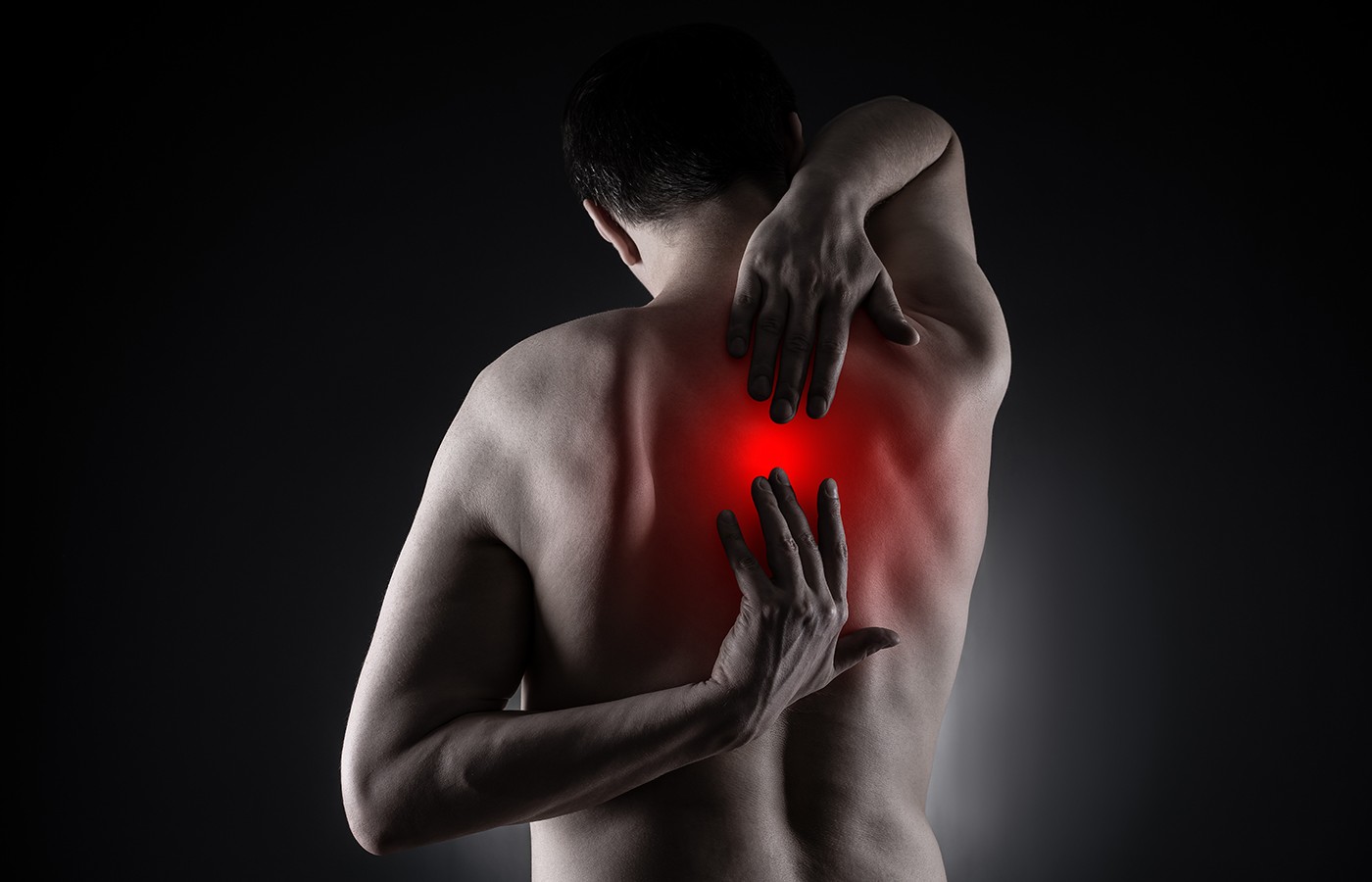When we talk about fertility, the focus is often placed on the ovaries and the uterus. Yet sperm-related factors contribute to nearly half of all cases of infertility. Whether someone is navigating fertility care alone or with a partner, and whether building a family through intercourse, IVI, IUI or IVF, it’s vital to include sperm health in the picture.
That Nagging Qi Stagnation Between the Shoulder Blades (Pt. 1)
- What exactly is the source of this pain? Is it the neck/ cervical spine, or the upper back/ thoracic spine? Is it bad posture; the slouched shoulder, head-forward, upper-crossed problem?
- If the rhomboid pain is coming from cervical disk pathology, it’s a referred pain. Cervical internal disc issues can produce local and peripheral symptoms.
- As you would expect, joint, disc injury, and dysfunction with the thoracic spine can have the same pain referral effect as the cervical spine.
How often do you see a patient with that allusive pain between the shoulder blades with the catch-all name “rhomboid pain”? When I prepare for a patient and check their onboarding forms, I’ll see varying descriptions for the chief complaint of this “rhomboid pain,” such as upper back pain, thoracic pain, neck pain, shoulder pain, T-spine pain, between-the-shoulder-blades-pain, medial scapular pain, etc. That nagging ache or stabbing, knife-like pain that when once activated, likes to be persistent and hang around for a while, disturbing sleep and disrupting pretty much everything. I see a few patients a week with this “rhomboid pain.”
The bigger question is, what exactly is the source of this pain? Is it the neck/ cervical spine, or the upper back/ thoracic spine? Is it bad posture; the slouched shoulder, head-forward, upper-crossed problem? Is it a latent trigger point (TrP) activating in the muscle because of poor ergonomics, deconditioning, and overuse? Or is it a little bit of all these things? In this article, I discuss how I go about identifying the source of and treating this “rhomboid qi stagnation.”
Let’s start by discussing the different types of qi stagnation pain we experience, described best by WikiMSK.org https://wikimsk.org/wiki/Somatic_Referred_Pain). (By the way, you should check out the WikiMSK website (https://wikimsk.org/wiki/Main_Page); it’s an excellent resource!)
“Somatic referred pain is pain perceived in a region innervated by nerves coming from somatic structures other than those that innervate the source of pain. The mechanism is through convergence. Somatic referred pain has a characteristic quality. It is deep, achy, expanding pressure, and is felt in a broad area. The location remains consistent. Patients can clearly identify the center of pain but find it hard to define the boundaries.
“In contrast, radicular pain is shooting or lancinating and extends along a narrow band. Neuropathic pain is burning and has sensory abnormalities. Somatic referred pain has no neurological deficit.”
1. Referred Pain From the Cervical Spine
If the rhomboid pain is coming from cervical disk pathology, it’s a referred pain. Cervical internal disc issues can produce local and peripheral symptoms.2 The research demonstrates that the cervical intervertebral disks and/or the cervical facet joints can refer pain out to the surrounding tissues between the spine and the medial border of the scapula – particularly segments between C5 to C7.1
To assess whether this is truly a cervical-generated referred pain to the medial scapular area, there will also be local cervical discogenic pathology and pain. Over time, the local cervical segment pain spreads or projects to the area of complaint.3 The quality of the referred pain will be described as a diffuse, aching pain that cannot be pinpointed or specifically targeted.
A localized pain that can be found has more of the quality described as knife-like, sharp, or stabbing and can be palpated directly.4
The patient should have a history of neck pain, and you can usually palpate using joint play to recognize that the referred pain is coexistent with the neck pain. When examining your patient, you want to palpate down the cervical segments using joint play to provoke the pain in the interscapular area. The patient will also report that when their neck pain increases, so will the rhomboid pain.
Remember, referred pain is not distributed through a dermatomal distribution, but more from a sclerotome distribution.3 The referred pain is delivered to a wider area and is hard to localize.3
Treatment considerations if the pain is elicited from the cervical spine: The following is just an example of a generalized treatment plan. A personalized treatment will be designed per the patient’s presentation-based exam.
- Electroacupuncture considerations: local points: Bl 10 and GB 20 (semispinalis capitis and splenius capitis), GB 12 and LI 18 (SCM), splenius cervicis, GB 21, GV 13-14, SI 14, 15, 16, and multifidi C5 to T1, Huatuojiaji; distal points: Luo Zhen, SI 3, SJ 3, LI 4 & 10.
- External manual therapy considerations: cupping, guasha, traction, moxibustion, mobilization.
- Home exercise therapy considerations: self-mobilization techniques, supine chin tucks/double-chin exercise, neck curl, use of a lordosis neck bolster, etc. Patients can perform these exercises several times a day.
Disc pain has very similar referral patterns to zygapophyseal joint pain. The pattern of pain was provoked by discography at each cervical level in a retrospective study of symptomatic patients.5
2. Referred Pain From the Thoracic Spine
As you would expect, joint, disc injury, and dysfunction with the thoracic spine can have the same pain referral effect as the cervical spine. In fact, some of the thoracic pain referral studies were designed from the cervical pain referral studies. As with the C-spine, research has demonstrated that the referred pain from the thoracic zygapophyseal/facet and costotransverse joints refers the pain laterally into the soft tissues between the shoulder blades.6-8
More evidence of this will be apparent within the patient’s current state of T-spine pain, the connection of that T-spine pain with the medial scapular pain, and a medical history of thoracic pain, along with joint play palpation.
Remember that when using joint play/segmental motion palpation, you will be discovering whether the segments are hypermobile or hypomobile. With these discoveries, proper treatment needs to be considered: a focus on either stability or mobilization.
Treatment considerations if the pain is elicited from the thoracic spine: The following is just an example of a generalized treatment plan. A personalized treatment will be designed per the patient’s exam findings.
- Electroacupuncture considerations: local points: Bladder and Governor Channel points, multifidi T 1 to T 7, and Huatuojiaji; distal points: Jing Well of LI, SI, and SJ, GB 10, SJ 3, LI 4, 10, 11, K 27, S I3, BL 60, GB 41, SJ 5.
- External manual therapy considerations: cupping, guasha, traction, moxibustion, mobilization.
- Home exercise therapy considerations: self-mobilization techniques on a foam roller, windmills, prayer stretch, supine or wall thoracic rotation, scapula adduction and retraction exercise, etc. Patients can perform exercises several times a day.
Editor’s Note: This article continues in the February issue, discussing the evaluation of local muscle pain and trigger points.
References
- Cervical Pain Maps - WikiMSK. WikiMSK: https://wikimsk.org/wiki/Cervical_Pain_Maps
- Slipman CW., Plastaras C, Patel RK, et al. Provocative cervical discography symptom mapping. Spine J, 2005;5(4):381-388.
- Jin Q, Chang Y, Lu C, et al. Referred pain: characteristics, possible mechanisms, and clinical management. Front Neurol, 2023 Jun 28;14:1104817.
- Vernon H. What is different about spinal pain? Chiro Man Ther, 2012;20(1).
- Grubb SA, Kelly CK. Cervical discography. Spine, 2000;25(11):1382-1389.
- Dreyfuss P, Tibiletti C, Dreyer SJ. Thoracic zygapophyseal joint pain patterns. Spine, 1994;19(7):807-811.
- Dwyer A, et al. Cervical zygapophyseal joint pain patterns I: a study in normal volunteers. Spine, 1990;15(6):453-457.
- Young BA, Gill HE, Wainner RS, Flynn TW. Thoracic costotransverse joint pain patterns: a study in normal volunteers. BMC Musculoskel Disord, 2008;9(1).
Other Resources
- Fukui S, Ohseto K, Shiotani M. Patterns of pain induced by distending the thoracic zygapophyseal joints. Regional Anesth Pain Med, 1997;22(4): 332-336.
- Schellhas, KP, Garvey TA, Johnson BA, et al. Cervical diskography: analysis of provoked responses at C2-C3, C3-C4, and C4-C5. AJNR Am J Neuroradiol, 2000 Feb;21(2):269-275.
- Cloward RB. Cervical diskography. a contribution to the etiology and mechanism of neck, shoulder and arm pain. Ann Surg, 1959;150(6):1052-1064.



